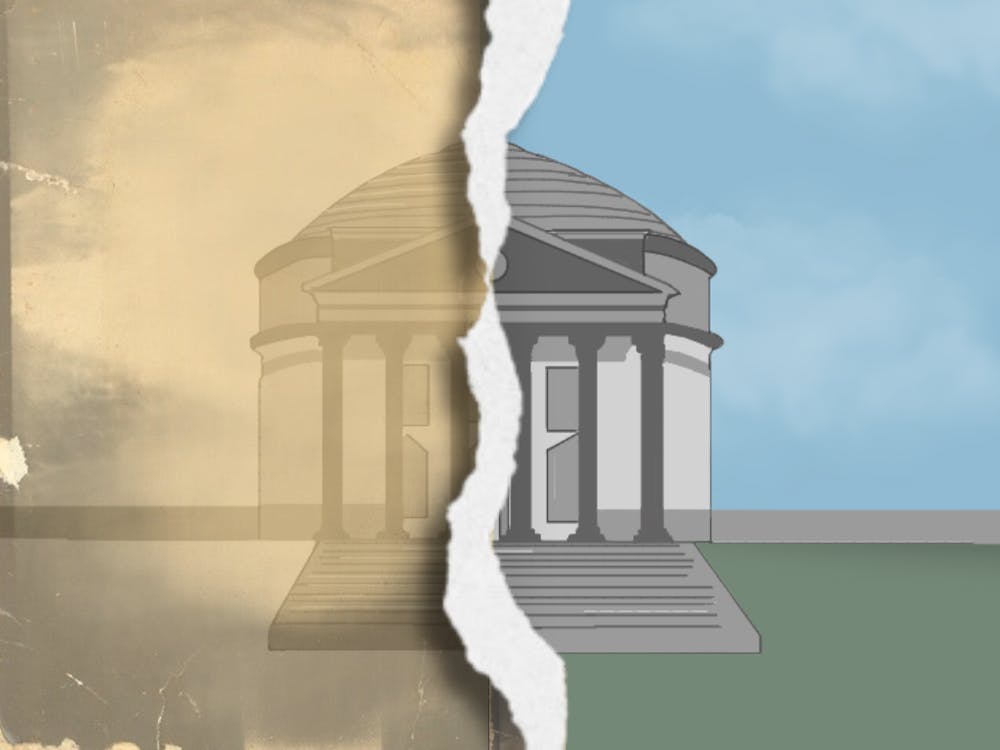WAR COVERAGE 101 is a course we'd all probably prefer not to take, but with Peter Arnett and night-vision green back on television, The Cavalier Daily and every other newspaper in the country have been thrust into the classroom.
It seems that there are several basic elements of coverage that a paper should bring its readers during a war. The Cavalier Daily has covered all of the bases in the war's first week.
The first element, obviously, is the important details of the battle. The Cavalier Daily put together a comprehensive war package on Thursday, leading with a wire service story on the start of the battle and a large photo. It also included stories about a planned walkout protest, the vandalism of ROTC buildings and a story about the University's decision not to recall students abroad. The newspaper also prepared readers for the initial bombing by running a story Wednesday about President George W. Bush's ultimatum to Saddam Hussein and included insight from University politics professors.
On Friday, The Cavalier Daily's front page featured a story about the walkout protest staged the day before by University students and a story about an inter-religious gathering.
In this day of news saturation, there are more television broadcasts and articles on news sites on the Web than anyone could read or view. The war has exacerbated that situation, for better or for worse. But unlike 24-hour news networks and the unlimited potential of cyberspace, newspapers have a very finite amount of space in which to convey the news. So ultimately, the proliferation of war news means that newspapers have to choose carefully the articles that make it to print. So far, I think The Cavalier Daily has done a good job of that.
One challenge newspapers face in war coverage is to seek out the relevance to the community of a battle going on thousands of miles away. The embedding of professional journalists with military units and the television images of troops and Baghdad under siege does make this task a little easier for journalists. But newspapers must still cover the effects of the war at home. Protest stories are part of that effort, as are stories with local reaction. The Cavalier Daily has a wealth of resources on which to draw in addition to politics professors, I'd like to see some interviews with professors who specialize in the Middle East, with economics professors and with those with military backgrounds. It might be worth the paper's while to seek out any veterans of Desert Storm who might be in Charlottesville, and, of course, to keep an eye and an ear out for active duty soldiers or reservists who have been called up.
Community journalism such as this helps readers understand how their community is being affected.
Another key element of war coverage is found on the Opinion page. Here again, The Cavalier Daily has covered its bases. Wednesday's lead editorial expressed the Managing Board's opinion on the walkout. There have been numerous opinion columns on topics related to the war, and thankfully, they have focused on different aspects, from one Dixie Chick's controversial denouncement of President Bush to the French stance on Iraq. And the letters page has been home to a lively debate on the opinion columns and the war itself.
My only complaint on war coverage last week was the short piece in Friday's paper on the University's policy on workers attending protests. The article just said that the University has said workers are free to express their opinion on the subject, but that they must get permission from a supervisor before missing work to attend a protest. It was an interesting topic, but I was left wondering if there had been any problems with employees ditching work to protest or how likely it would be for an employee requesting time off to attend a march to be granted the leave.
Those are my two cents. Want to give me yours? Drop me a line.
(Masha Herbst can be reached at ombud@cavalierdaily.com)






